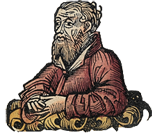Dio of Prusa’s eighteenth oration, the so-called letter On Training for Public Speaking, presents a reading list of Greek literature. The unknown addressee, who appears to be a powerful statesman, wishes to acquire ‘training in eloquent speaking’, for which he has not found the time in the past. Dio helpfully provides him with a short guide to those Greek poets, historians, orators and philosophers who are the most useful models for public speakers. Dio’s canon of Greek literature is traditionally interpreted as yet another representative of the standard reading lists that were used in rhetorical education. Scholars have argued that there is general agreement between Dio’s selection of Greek authors and the reading lists in Dionysius of Halicarnassus’ On Imitation, Quintilian’s Institutio oratoria (book 10) and Hermogenes’ On Types of Style. It has also been suggested that that these reading lists simply repeat the recommendations of Alexandrian scholars like Aristarchus and Aristophanes.
This paper will argue that Dio’s reading list is in fact fundamentally different from that of Dionysius. Among the authors that Dionysius prefers, Homer, Aeschylus, Sophocles, Herodotus, and Demosthenes stand out; Dio on the other hand recommends his reader to study Menander, Euripides, Xenophon and Aeschines. The latter selection appears to correspond more closely to the Roman taste of the first century AD. Although Quintilian follows the order of Dionysius’ list rather closely, he agrees in essential points with his contemporary colleague Dio.
In explaining the differences between these reading lists, we should take at least three factors into account. Firstly, audience: Dionysius presents his treatise On Imitation to the Greek Demetrius, whereas Dio appears to write for a Roman statesman (possibly Titus or Nerva). Secondly, aesthetics: although Dionysius and Dio both claim to offer a practical guide for orators, it is obvious that Dionysius emphasizes ‘beauty’ and ‘sublimity’, whereas Dio focuses on ‘usefulness’. Thirdly, the development of Greek criticism in Rome: between the first century BC and AD, we move from the archaizing, democratic, idealizing classicism of Dionysius to the modern, imperial, pragmatic classicism of Dio.
